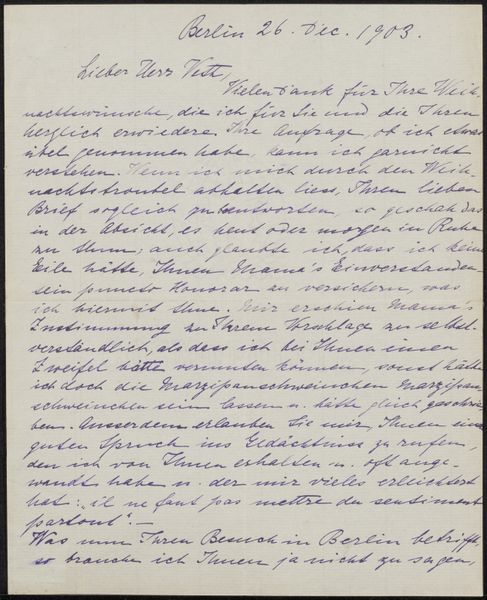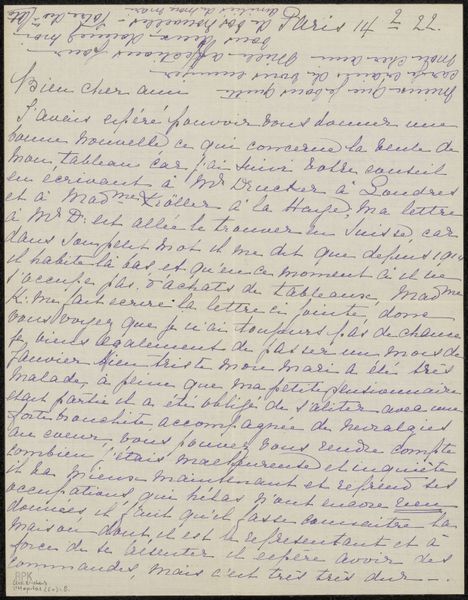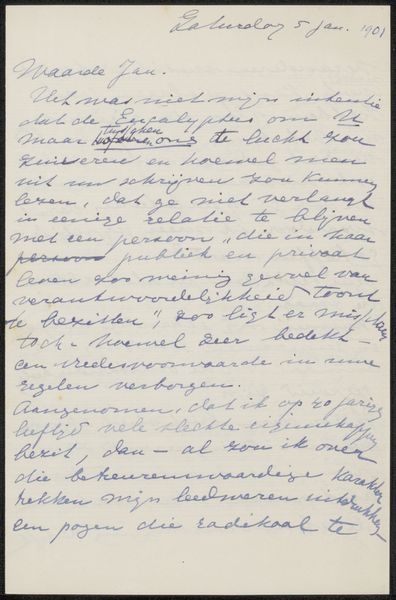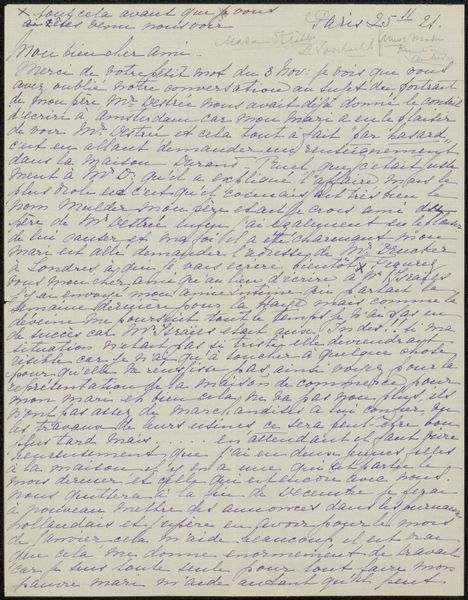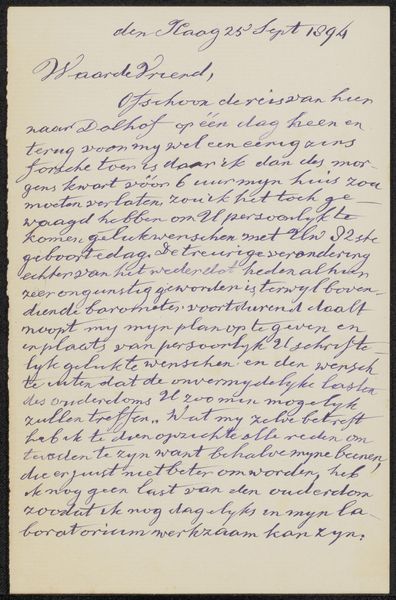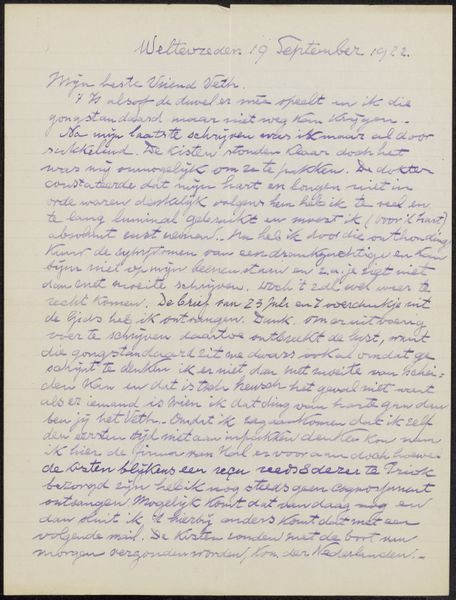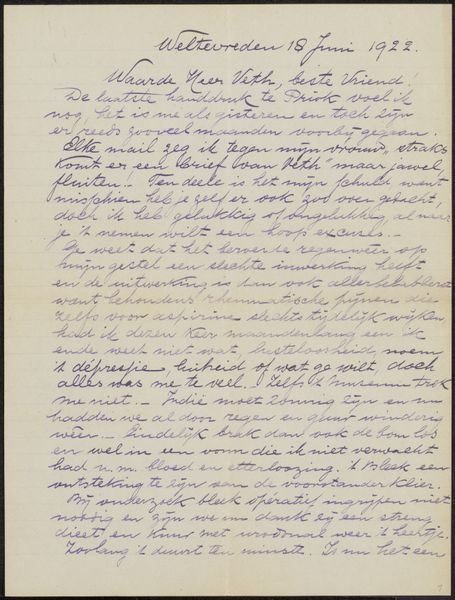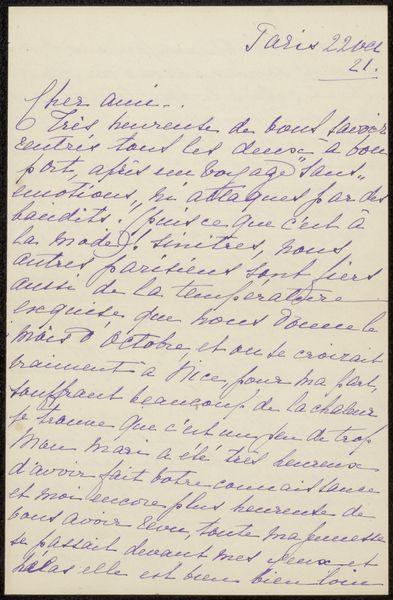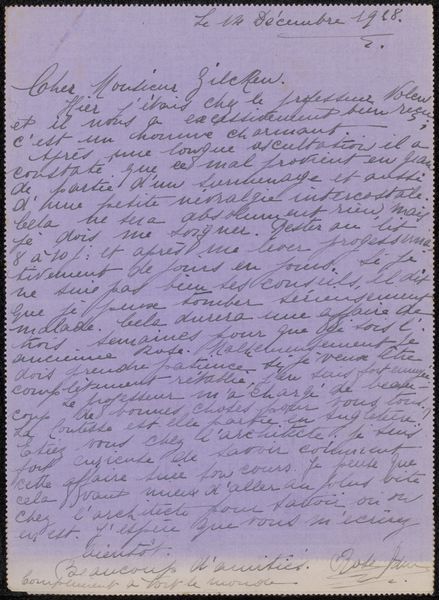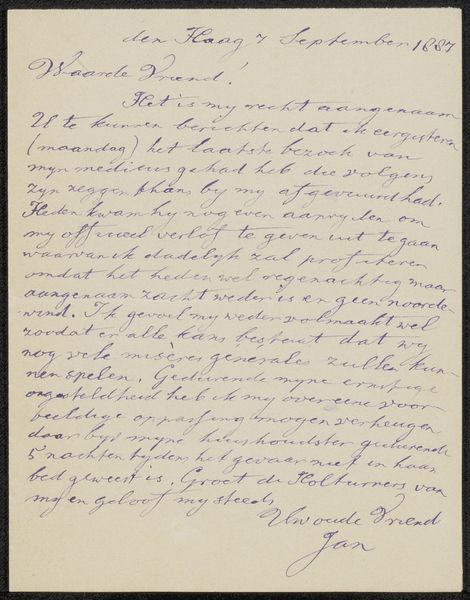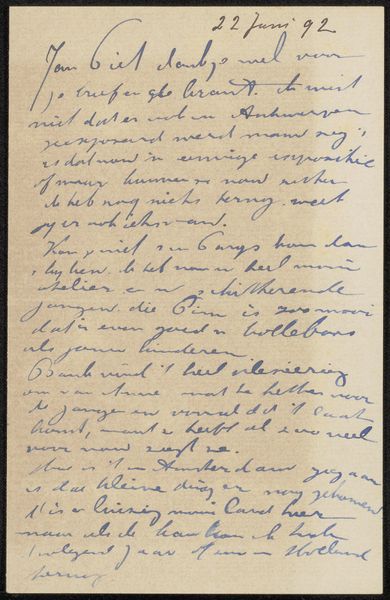
drawing, paper, ink, pen
#
drawing
#
paper
#
ink
#
calligraphic
#
pen
#
calligraphy
Copyright: Rijks Museum: Open Domain
Curator: This drawing is "Brief aan Philip Zilcken" by Cato l'Hôpital, dating from before 1927. It's ink on paper, primarily a pen drawing showcasing a strong calligraphic style. My initial read focuses on its materiality: the artist's labor embedded in each stroke, the paper's absorption of the ink, and how the mass production of these materials influences accessibility and creative expression. Editor: It definitely has an intimate feel because it's a letter, you can see all the writer’s pen strokes... What do you see in this piece? Curator: The letterform is fascinating. Considering its function as a means of communication, it moves beyond purely transmitting information. The very act of handwriting—the time, effort, and embodied experience—becomes part of the artwork's message. Notice the texture and depth achieved through the varying pressure of the pen; How does the contrast of light and shadow formed by the ink impact how we "read" this piece? Editor: Well, I see that because the ink has faded and some of the handwriting overlaps, it makes it feel much more personal, more handmade. I wonder about how the artist thought about using something everyday for creative output. Curator: Precisely. This brings up some good points around the perceived hierarchy of "high" art versus functional craft like letter-writing. Here, L'Hôpital elevates the everyday by attending to the nuances of material and process. Think about the social context – who had access to paper, pens, and the literacy to create such a document in the early 20th century? It speaks to a certain level of privilege and access. Editor: So, by looking closely at the materials and how the letter was made, we're actually uncovering layers of meaning about social status, artistic choices, and even the value we place on different kinds of labor? Curator: Exactly! And by examining those layers, we begin to understand how art reflects and engages with broader material and social realities. Editor: That’s fascinating; it really shifts how I look at something as simple as a letter.
Comments
No comments
Be the first to comment and join the conversation on the ultimate creative platform.
